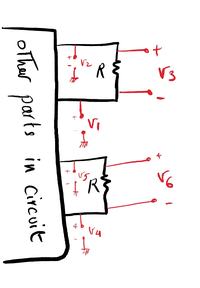firefarzad
Junior Member level 1
hi,
I want to measure voltage difference between 2 point in my circuit, that is about 30-500mv using adc.the problem is that the voltage of each point is about 300 VDC.
so please help me with measuring this with adc.
I want to measure voltage difference between 2 point in my circuit, that is about 30-500mv using adc.the problem is that the voltage of each point is about 300 VDC.
so please help me with measuring this with adc.
